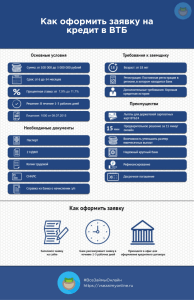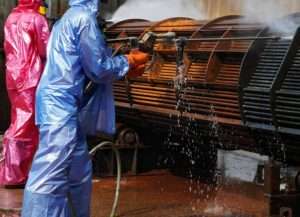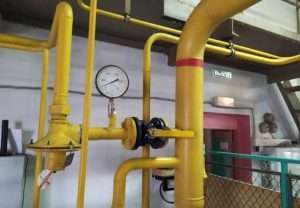Как выгодно взять потребительский кредит
Хотите взять потребительский кредит и не переплатить? Узнайте, как выбрать самый выгодный вариант и избежать подводных камней! Секреты экспертов внутри!
Вопрос о том, как выгоднее взять потребительский кредит, волнует многих, кто сталкивается с необходимостью финансирования крупных покупок или решения финансовых проблем. Выбор правильного кредитного продукта может существенно сэкономить средства в долгосрочной перспективе. Важно тщательно изучить все доступные предложения на рынке, учитывать не только процентную ставку, но и другие факторы, влияющие на общую стоимость кредита. В конечном итоге, осознанный подход к выбору кредита позволит избежать переплат и создать комфортные условия погашения.
Анализ предложений на рынке
Прежде чем подавать заявку на кредит, необходимо провести тщательный анализ предложений от различных банков и финансовых организаций. Сравните процентные ставки, сроки кредитования, размеры ежемесячных платежей и наличие дополнительных комиссий. Обратите внимание на специальные предложения и акции, которые могут значительно снизить стоимость кредита.
Основные критерии выбора
- Процентная ставка: Основной показатель, влияющий на стоимость кредита. Сравните номинальную и эффективную процентные ставки.
- Срок кредитования: Влияет на размер ежемесячного платежа и общую переплату. Короткий срок ⎯ меньше переплата, но выше платеж.
- Комиссии и сборы: Узнайте о наличии скрытых комиссий за открытие, обслуживание и досрочное погашение кредита.
- Страховка: Оцените необходимость и стоимость страхования жизни и здоровья.
Улучшение условий кредитования
Существуют способы улучшить условия предлагаемого кредита. Например, можно предоставить банку дополнительное обеспечение в виде залога или поручительства. Также, наличие хорошей кредитной истории и стабильного дохода повышает шансы на получение кредита по более выгодной процентной ставке;
Как улучшить кредитную историю?
- Своевременно оплачивайте все кредиты и коммунальные платежи.
- Не допускайте просрочек по платежам.
- Регулярно проверяйте свою кредитную историю и исправляйте ошибки, если они есть.
Сравнительная таблица кредитных предложений
| Банк | Процентная ставка | Срок кредитования | Ежемесячный платеж |
|---|---|---|---|
| Банк А | 12% | 3 года | 10 000 рублей |
| Банк Б | 14% | 2 года | 12 000 рублей |
| Банк В | 10% | 4 года | 9 000 рублей |
Итак, вы определились с критериями и провели сравнительный анализ. Но достаточно ли этого, чтобы быть уверенным в правильности выбора? Не упустили ли вы какие-то важные нюансы в договоре, которые могут существенно повлиять на общую стоимость кредита? И как убедиться, что выбранный банк действительно надежен и не изменит условия кредитования в одностороннем порядке?
О ЧЕМ ЕЩЕ СТОИТ ЗАДУМАТЬСЯ?
Помимо процентной ставки и комиссий, какие еще факторы могут повлиять на вашу кредитную нагрузку? Не стоит ли рассмотреть возможность досрочного погашения кредита, и какие условия предлагает банк в этом случае? А если возникнут финансовые трудности, предусмотрена ли возможность реструктуризации долга или кредитных каникул?
ВОПРОСЫ БЕЗОПАСНОСТИ
– Как защитить себя от мошенников при оформлении кредита онлайн?
– Что делать, если банк требует предоплату за оформление кредита?
– Какие документы необходимо проверить перед подписанием кредитного договора?
Можно ли обратиться к кредитному брокеру за помощью в выборе кредита? И какие преимущества и недостатки сотрудничества с ним? Стоит ли доверять рекламным обещаниям банков о низких процентных ставках? И как проверить реальную стоимость кредита с учетом всех дополнительных расходов?
Выбирая как выгоднее взять потребительский кредит, необходимо учесть все возможные риски и тщательно взвесить свои финансовые возможности. Не торопитесь с принятием решения и задавайте как можно больше вопросов сотрудникам банка. Уверены ли вы, что выбранный кредитный продукт действительно соответствует вашим потребностям и возможностям? Ведь грамотный подход к кредитованию – это залог вашего финансового благополучия в будущем. Важно помнить, что финансовая ответственность – это ключ к успешному управлению своими средствами. Не забывайте об этом, и ваш потребительский кредит станет инструментом достижения ваших целей, а не источником проблем.
КАК ВЫГОДНЕЕ ВЗЯТЬ ПОТРЕБИТЕЛЬСКИЙ КРЕДИТ
Вопрос о том, как выгоднее взять потребительский кредит, волнует многих, кто сталкивается с необходимостью финансирования крупных покупок или решения финансовых проблем. Выбор правильного кредитного продукта может существенно сэкономить средства в долгосрочной перспективе. Важно тщательно изучить все доступные предложения на рынке, учитывать не только процентную ставку, но и другие факторы, влияющие на общую стоимость кредита. В конечном итоге, осознанный подход к выбору кредита позволит избежать переплат и создать комфортные условия погашения.
АНАЛИЗ ПРЕДЛОЖЕНИЙ НА РЫНКЕ
Прежде чем подавать заявку на кредит, необходимо провести тщательный анализ предложений от различных банков и финансовых организаций. Сравните процентные ставки, сроки кредитования, размеры ежемесячных платежей и наличие дополнительных комиссий. Обратите внимание на специальные предложения и акции, которые могут значительно снизить стоимость кредита.
ОСНОВНЫЕ КРИТЕРИИ ВЫБОРА
– Процентная ставка: Основной показатель, влияющий на стоимость кредита. Сравните номинальную и эффективную процентные ставки.
– Срок кредитования: Влияет на размер ежемесячного платежа и общую переплату. Короткий срок ⏤ меньше переплата, но выше платеж.
– Комиссии и сборы: Узнайте о наличии скрытых комиссий за открытие, обслуживание и досрочное погашение кредита.
– Страховка: Оцените необходимость и стоимость страхования жизни и здоровья.
УЛУЧШЕНИЕ УСЛОВИЙ КРЕДИТОВАНИЯ
Существуют способы улучшить условия предлагаемого кредита. Например, можно предоставить банку дополнительное обеспечение в виде залога или поручительства. Также, наличие хорошей кредитной истории и стабильного дохода повышает шансы на получение кредита по более выгодной процентной ставке.
КАК УЛУЧШИТЬ КРЕДИТНУЮ ИСТОРИЮ?
– Своевременно оплачивайте все кредиты и коммунальные платежи.
– Не допускайте просрочек по платежам.
– Регулярно проверяйте свою кредитную историю и исправляйте ошибки, если они есть.
СРАВНИТЕЛЬНАЯ ТАБЛИЦА КРЕДИТНЫХ ПРЕДЛОЖЕНИЙ
Банк
Процентная ставка
Срок кредитования
Ежемесячный платеж
Банк А
12%
3 года
10 000 рублей
Банк Б
14%
2 года
12 000 рублей
Банк В
10%
4 года
9 000 рублей
Итак, вы определились с критериями и провели сравнительный анализ. Но достаточно ли этого, чтобы быть уверенным в правильности выбора? Не упустили ли вы какие-то важные нюансы в договоре, которые могут существенно повлиять на общую стоимость кредита? И как убедиться, что выбранный банк действительно надежен и не изменит условия кредитования в одностороннем порядке?
О ЧЕМ ЕЩЕ СТОИТ ЗАДУМАТЬСЯ?
Помимо процентной ставки и комиссий, какие еще факторы могут повлиять на вашу кредитную нагрузку? Не стоит ли рассмотреть возможность досрочного погашения кредита, и какие условия предлагает банк в этом случае? А если возникнут финансовые трудности, предусмотрена ли возможность реструктуризации долга или кредитных каникул?
ВОПРОСЫ БЕЗОПАСНОСТИ
– Как защитить себя от мошенников при оформлении кредита онлайн?
– Что делать, если банк требует предоплату за оформление кредита?
– Какие документы необходимо проверить перед подписанием кредитного договора?
Можно ли обратиться к кредитному брокеру за помощью в выборе кредита? И какие преимущества и недостатки сотрудничества с ним? Стоит ли доверять рекламным обещаниям банков о низких процентных ставках? И как проверить реальную стоимость кредита с учетом всех дополнительных расходов?
Выбирая как выгоднее взять потребительский кредит, необходимо учесть все возможные риски и тщательно взвесить свои финансовые возможности. Не торопитесь с принятием решения и задавайте как можно больше вопросов сотрудникам банка. Уверены ли вы, что выбранный кредитный продукт действительно соответствует вашим потребностям и возможностям? Ведь грамотный подход к кредитованию – это залог вашего финансового благополучия в будущем. Важно помнить, что финансовая ответственность – это ключ к успешному управлению своими средствами. Не забывайте об этом, и ваш потребительский кредит станет инструментом достижения ваших целей, а не источником проблем.
Какие альтернативные варианты финансирования стоит рассмотреть, прежде чем брать потребительский кредит? Может, стоит отложить покупку и накопить необходимую сумму? Или, возможно, есть смысл поискать более доступные варианты, такие как микрозаймы или кредитные карты с льготным периодом? Насколько критична потребность в кредите именно сейчас?
А что если попытаться договориться о рассрочке с продавцом товара или услуги? Не будет ли это более выгодным решением, чем обращаться в банк? И какие подводные камни могут скрываться в условиях такой рассрочки? Стоит ли рассматривать вариант получения кредита под залог имеющегося имущества? Насколько это безопасно и какие риски связаны с таким видом кредитования?
Не упускаете ли вы из виду возможности получения государственной поддержки или льготных кредитов для определенных категорий граждан? Существуют ли программы, которые могут помочь вам снизить процентную ставку или получить субсидию на погашение кредита? Как выгоднее взять потребительский кредит, если вы являетесь молодым специалистом, пенсионером или представителем социально уязвимой группы населения?
А уверены ли вы, что действительно понимаете все условия кредитного договора? Не стоит ли обратиться к юристу за консультацией, чтобы избежать неприятных сюрпризов в будущем? И как поступить, если после получения кредита вы обнаружили, что условия оказались не такими выгодными, как вам обещали? Возможно ли расторгнуть договор или пересмотреть условия кредитования? Потребительский кредит может быть полезным инструментом, если к нему подойти с умом.






